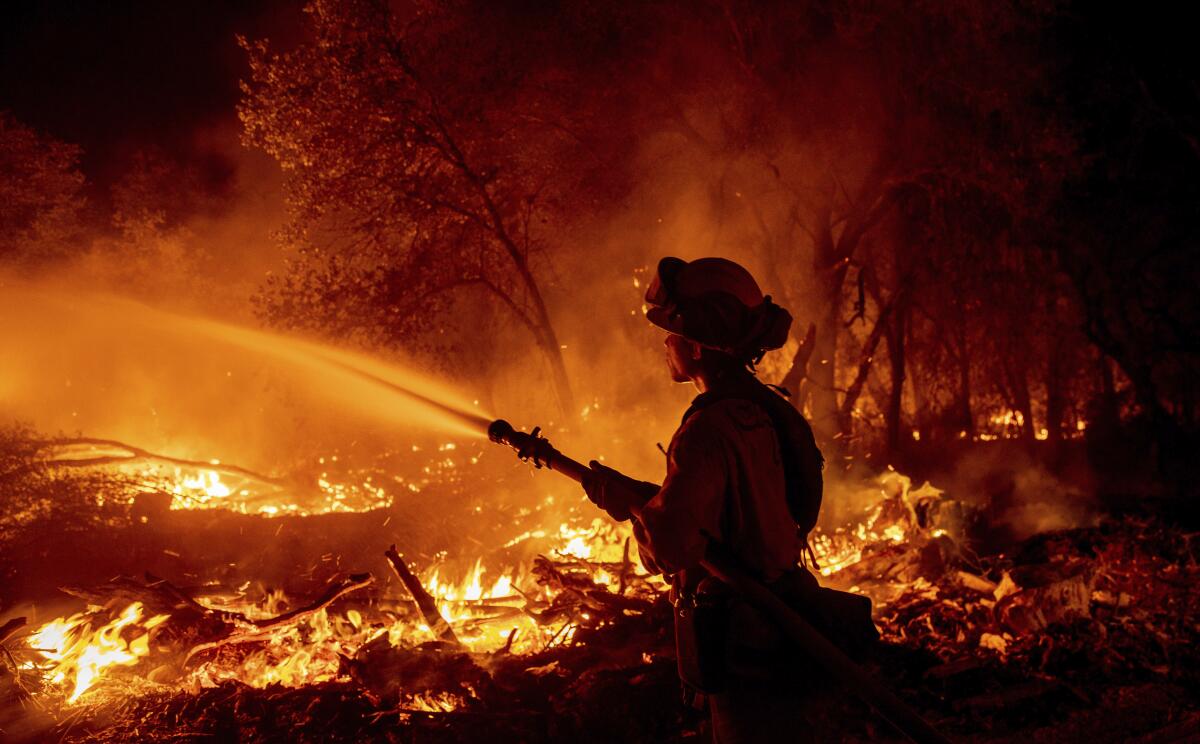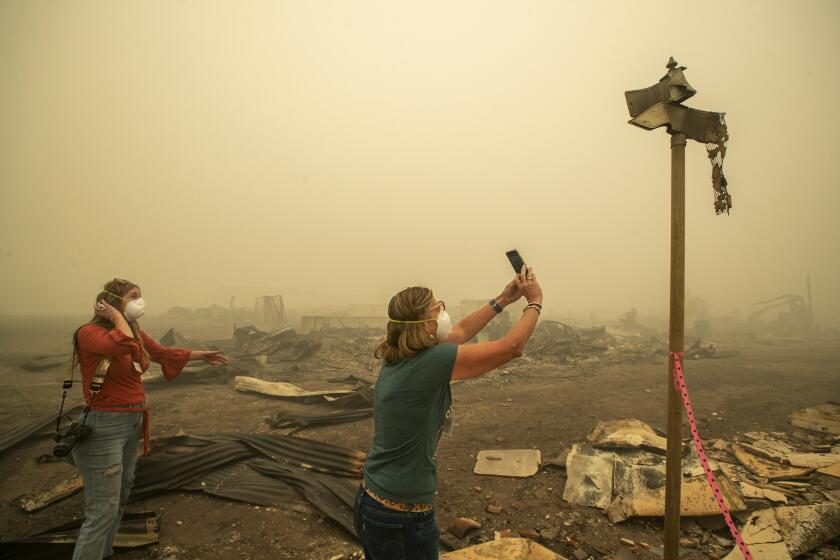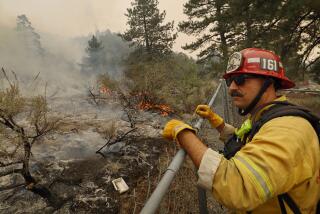Lower temperatures help firefighters boost containment of Fawn fire

Milder temperatures helped firefighters battling the Fawn fire north of Redding boost containment of the blaze significantly by Sunday as crews try to make the most out of what’s expected to be a short-lived cooling trend.
The Fawn fire had burned 8,559 acres and was 45% contained as of Sunday night, officials said. The extent of the destruction caused by the fire is unclear. At a press conference, a fire official said 70 structures have been destroyed, while figures on the California Department of Forestry and Fire Protection website put the total at double that.
Alexandra Souverneva, 30, of Palo Alto has been charged with arson in connection with the fire.
“We can officially declare the forward spread of this fire stopped,” Scott Corn, deputy incident commander with Cal Fire, said during a briefing Sunday night.
More than 2,000 fire personnel have been assigned to the blaze, which erupted Wednesday afternoon and quickly spread amid high temperatures and gusty winds, forcing evacuations. But in the last day, a cooling trend took hold in the region, helping firefighters to make progress on the blaze, said Jeremy Hollingshead, a public information officer for California Incident Management Team 4.
“The personnel on this fire are working around the clock to improve containment and get this fire under control,” he said. “Right now we have the wind and the weather in our favor and we’re using that to our advantage. We’re being very aggressive.”
A storm system moving into the Pacific Northwest on Monday night into Tuesday will keep temperatures about 10 degrees below average in the fire area and could bring about a tenth of an inch of rain.
Typically, precipitation amounting to more than a tenth of an inch can dampen some of the finer fuels like grasses, said Bill Rasch, a meteorologist with the National Weather Service in Sacramento.
Experts say there is a lot to learn from the state’s second-largest fire, including how it spread — and how firefighters stopped it.
However, Rasch warned that’s “probably not going to happen” with this system. After the storm passes, the region could once again see drier and windier conditions, he said.
Still, firefighters are taking advantage of lower temperatures and higher overnight humidity levels to get the upper hand on the blaze, Hollingshead said.
“We’re not going to let up,” he said.
Nearly 350 miles southeast of the Fawn fire, the 45,790-acre KNP Complex fire continued to grow in Sequoia and Kings Canyon national parks. Authorities reported 8% containment as of Sunday night.
The nearby Windy fire, which is burning in the Tule River Reservation and Sequoia National Forest, had grown to 82,278 acres and was 2% contained as of Sunday night. The blaze was sparked by lightning Sept. 9.
Heavy smoke in the area had made air drops challenging for crews early in the weekend as the blaze made its way south, burning up dead, dry and beetle-infested trees. Crews are hoping cooler conditions and slightly higher humidity levels will help lift some of the smoke, said Chris Cimorelli, a public information officer for California Incident Management Team 5.
“It’s good news for any kind of air suppressant, but that also means the fire activity could pick up because you’re introducing more oxygen into the fire,” he said.
More to Read
Sign up for Essential California
The most important California stories and recommendations in your inbox every morning.
You may occasionally receive promotional content from the Los Angeles Times.













